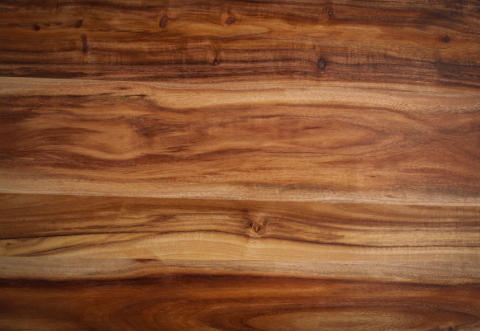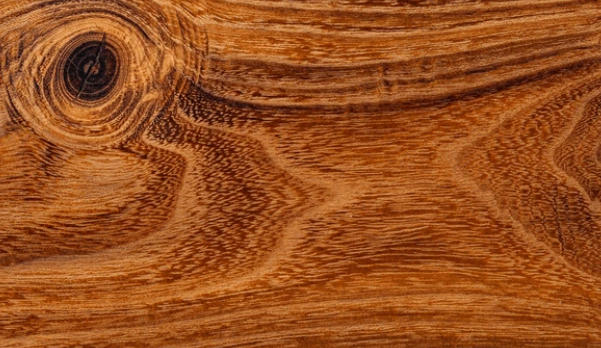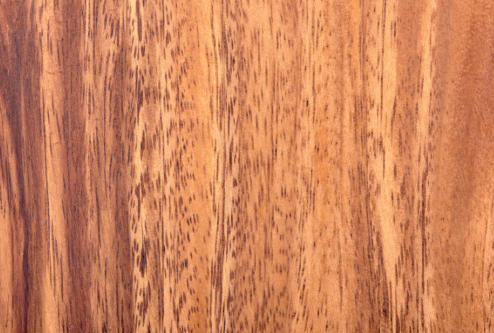










Content Menu
● Understanding What Defines a Hardwood
>> Essential Traits of True Hardwoods
● Why Acacia Is Classified as a Hardwood
>> Wood Density
>> Natural Oils and Resistance
● Historical and Cultural Uses of Acacia
● Physical Properties of Acacia Hardwood
● Common Applications of Acacia Hardwood
>> 2. Flooring
>> 4. Kitchenware and Utensils
>> 5. Artistic and Craft Projects
● Comparing Acacia to Other Hardwoods
● Sustainability and Environmental Significance
● Design Value and Aesthetic Appeal
● Maintenance and Care for Longevity
● Market Demand and Global Trade
● The Role of Acacia in Green Architecture
● FAQ
>> 1. What makes Acacia wood a hardwood?
>> 2. Is Acacia harder than oak or teak?
>> 3. Can Acacia furniture be used outdoors?
>> 4. How environmentally sustainable is Acacia wood?
>> 5. How should Acacia wood surfaces be cared for?
Acacia wood, derived from more than 1,300 species of the Acacia genus, is prized worldwide for its durability, natural beauty, and sustainability. Originating primarily from Australia, Africa, and parts of Asia, Acacia trees thrive in semi-arid and tropical climates. Historically, this species served multiple purposes—from shipbuilding and farming tools to high-end furniture production.
One of the most commonly asked questions among furniture makers and consumers is: Is Acacia wood a hardwood? The answer is emphatically yes. This wood possesses all the essential characteristics of hardwood—fibrous density, rich texture, and resilience against wear.

In biological terms, hardwood isn't simply “hard.” Instead, the classification depends on the botanical structure of the tree. Hardwoods come from angiosperms, meaning flowering plants with closed seeds—often encased within fruit or pods. These trees typically grow slowly, develop denser wood fibers, and produce highly compact cell structures.
By contrast, softwoods are derived from gymnosperms, such as pine, cedar, or spruce, which have cones and needles. Despite the name, some softwoods (like yew) can be very tough, while a few hardwoods (like balsa) are surprisingly lightweight. Therefore, the classification is based on *tree type,* not just hardness.
- Complex cellular structure with vessels (pores)
- Denser and heavier weight per cubic meter
- Natural resistance to abrasion and impact
- Varied and decorative grain patterns
- Greater longevity in structural and aesthetic uses
When these characteristics are compared, Acacia fits perfectly within the hardwood category.
Acacia trees are angiosperms, meaning they produce flowers and enclosed seeds. This alone places Acacia in the hardwood group biologically. These trees form compact, vessel-rich cell structures typical of other premium hardwoods like oak and teak.
Acacia's density ranges from 600 to 850 kg/m³, depending on the species and growing region. This density is significantly higher than that of most softwoods, enhancing its hardness, weight, and surface stability.
The Janka hardness test measures the wood's resistance to indentation. Acacia ranks between 1,750 and 2,300 lbf, depending on species such as *Acacia melanoxylon*, *Acacia koa*, or *Acacia mangium*. Oak's average Janka rating is about 1,300 lbf, which means Acacia is harder and more resistant to mechanical wear.
Unlike many timbers that require chemical or oil finishes for preservation, Acacia wood contains natural protective oils. These make the wood naturally resistant to insects, rot, and fungal attack, contributing to its lifespan under different environmental conditions.
Throughout history, Acacia wood has carried symbolic and functional importance. Ancient Egyptians used the Acacia nilotica tree to craft sarcophagi, ship parts, and religious artifacts because they recognized the wood's durability and sacred value. In African and Middle Eastern cultures, Acacia was commonly used for tool handles, fencing, and livestock enclosures due to its resilience.
In modern times, Acacia has evolved into a premium hardwood associated with sustainable furniture brands, artisanal craftsmanship, and high-end interior design. The hardwood's warm tone and striking grain appeal to consumers seeking a balance of beauty, performance, and environmental consciousness.
Acacia hardwood displays a broad color spectrum, from rich golden browns and honey hues to deep chocolate streaks. Exposure to light deepens the color tone, creating a luxurious patina effect. The grain pattern is often straight but can exhibit interlocking or wavy configurations, resulting in natural artistic appeal.
The texture is fine to medium, with a smooth tactile surface when polished. Acacia responds exceptionally well to finishes and oils, giving products a semi-gloss or matte sheen depending on the treatment.
Due to its dense structure, Acacia has low shrinkage rates, making it dimensionally stable under humidity changes. This characteristic makes it perfect for construction, flooring, and cabinetry in both dry and humid climates.

Acacia is widely used in dining tables, bed frames, chairs, cabinets, and shelving. Its natural patterns and durability ensure furniture that lasts for decades. Designers often combine Acacia slabs with metal or resin to create modern rustic looks.
Thanks to its exceptional hardness, Acacia wood flooring stands out as one of the most enduring materials. The variation in grain and tone enhances visual texture, and high resistance to foot traffic makes it ideal for public spaces and homes alike.
With proper treatment, Acacia is used for gardens, patios, and decking, where it resists environmental stress. Its oils deter termites and other pests that often attack untreated woods.
The antibacterial nature and water resistance of Acacia wood make it perfect for kitchenware—such as cutting boards, salad bowls, and trays. These items are both sustainable and safe for food contact.
Acacia's beautiful grain enables artisans to craft unique sculptures, wall décor, and musical instruments. The wood's tonal quality also complements acoustic guitars, producing warm, resonant sounds.
| Characteristic | Acacia | Teak | Oak | Mahogany |
|---|---|---|---|---|
| Hardness (Janka) | 1,750–2,300 lbf | 1,000 lbf | 1,290 lbf | 800–900 lbf |
| Grain Appearance | Straight to wavy | Straight | Coarse | Fine and even |
| Water Resistance | High | Very high | Moderate | High |
| Maintenance | Low | Moderate | Moderate | Low |
| Price Range | Moderate | High | Moderate | High |
| Sustainability | High | Moderate | High | Variable |
This table illustrates that Acacia not only meets hardwood standards but often exceeds expectations in terms of sustainability, visual richness, and strength-to-weight ratio.
Sustainable forestry has turned Acacia into one of the most eco-friendly hardwoods available today. Many Acacia species are fast-growing, reaching maturity within 15 to 25 years, compared to oaks that may take several decades. This rapid growth cycle supports regenerative forest management.
Additionally, Acacia contributes positively to soil health through nitrogen fixation, which enriches soil fertility and supports other plant growth. When sourced responsibly through FSC or PEFC-certified suppliers, Acacia can be a responsible and renewable hardwood option for modern consumers.
Interior designers value Acacia for its natural warmth and intricate grain pattern. Whether used in minimalist Scandinavian interiors or rustic farmhouse settings, its tonal variety adapts gracefully to different design languages.
In commercial interiors, Acacia serves as a sustainable substitute for exotic hardwoods like teak or rosewood, offering similar prestige but at a more accessible cost. The wood harmonizes with neutral or bold color palettes, adding texture and organic energy to rooms.
While Acacia wood is durable by nature, proper care preserves its beauty and integrity.
- Clean gently: Use a soft, damp cloth instead of chemical solvents.
- Re-oil periodically: Apply linseed or tung oil every 6–12 months for furniture exposed to moisture.
- Avoid direct sunlight: Prolonged exposure can darken color unevenly.
- Use mats or coasters: Protect table surfaces from heat and liquid rings.
- Polish occasionally: Light buffing restores shine without heavy refinishing.
When maintained properly, Acacia furniture and flooring can last 20 to 40 years or longer.
Over the last decade, global demand for Acacia wood products has surged due to its combination of beauty, strength, and sustainability. Manufacturers in China, Vietnam, and Malaysia have become leading exporters of Acacia furniture and engineered flooring, serving major markets in Europe, North America, and the Middle East.
Retailers appreciate Acacia for being affordable yet premium, appealing to environmentally conscious buyers who want style without the environmental cost of rainforest depletion. Its versatility across outdoor and indoor applications ensures a consistent and expanding marketplace.
As green building standards like LEED and BREEAM rise globally, Acacia's sustainability credentials make it an ideal material for eco-conscious construction. Architects favor it for cladding, paneling, and customized woodworking because it offers both high performance and reduced carbon footprint.
Additionally, Acacia plantations can rehabilitate deforested land, creating long-term socio-economic benefits for rural communities in tropical regions. This helps bridge the gap between economic development and environmental conservation.
Acacia wood is without a doubt a hardwood in every sense of the term—dense, durable, and visually captivating. It embodies the strength of nature while offering designers and homeowners a sustainable, affordable alternative to more expensive exotic woods. From furniture and flooring to kitchenware and outdoor use, Acacia combines beauty and resilience, standing as one of the most balanced woods on the market today.
Choosing Acacia means investing in a material that performs remarkably, honors sustainability, and contributes both artistic and practical value across industries.

Acacia comes from flowering trees (angiosperms) with dense fibrous structures. Its exceptional Janka hardness confirms its classification as a true hardwood.
Yes. Acacia typically measures 1,750–2,300 lbf compared to oak's 1,300 lbf and teak's 1,000 lbf, making it denser and more resistant to scratches and impacts.
Yes, especially when sealed or oiled. Its natural oils repel moisture and insects, but maintenance ensures a longer lifespan under direct sunlight or rain.
Extremely. Because Acacia grows quickly and replenishes soil nitrogen, it's an eco-friendly hardwood. Certified sources ensure responsible forest management and renewability.
Clean weekly with damp cloths, avoid harsh chemicals, regularly apply oil, and use protective pads to prevent surface damage and maintain long-term polish.